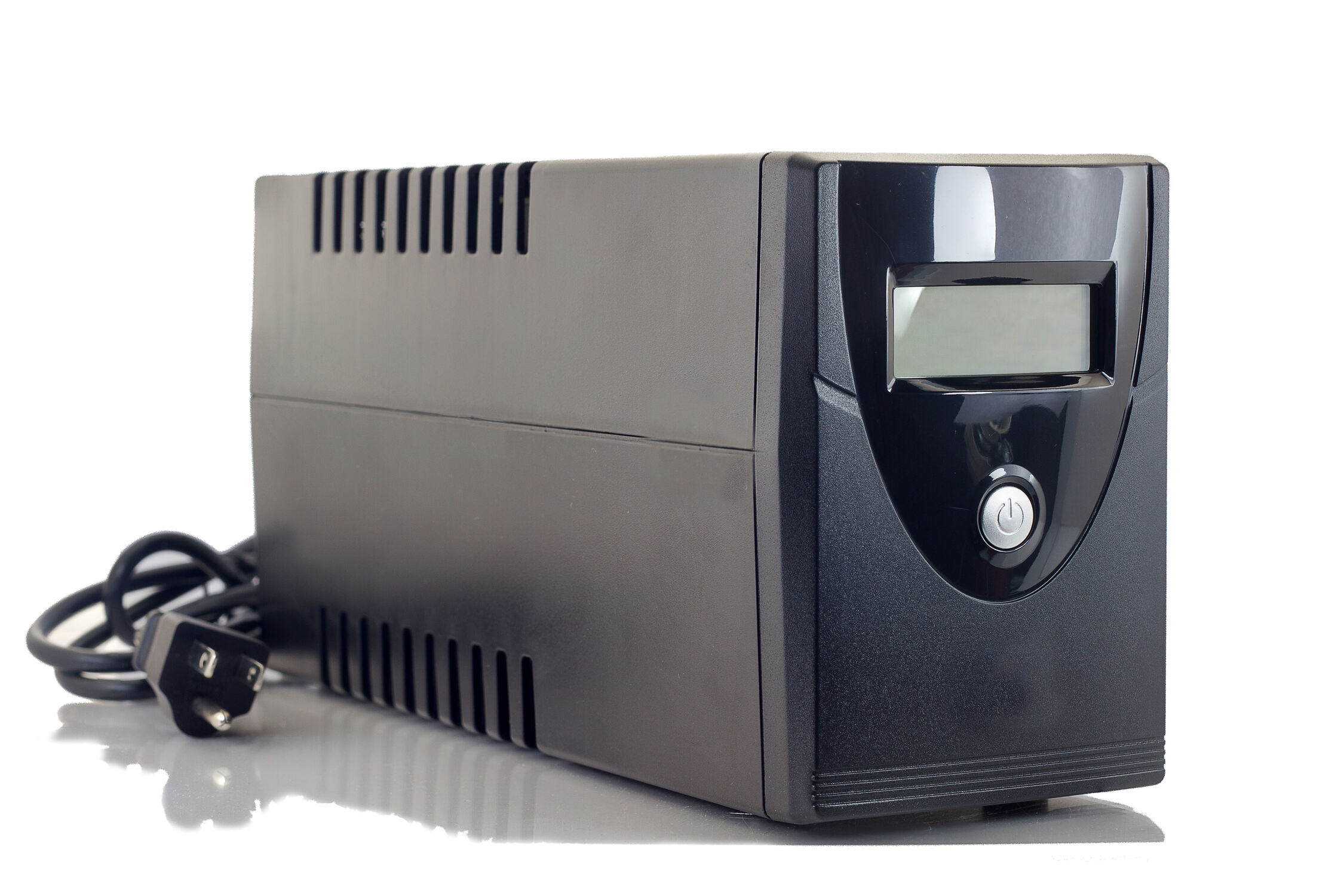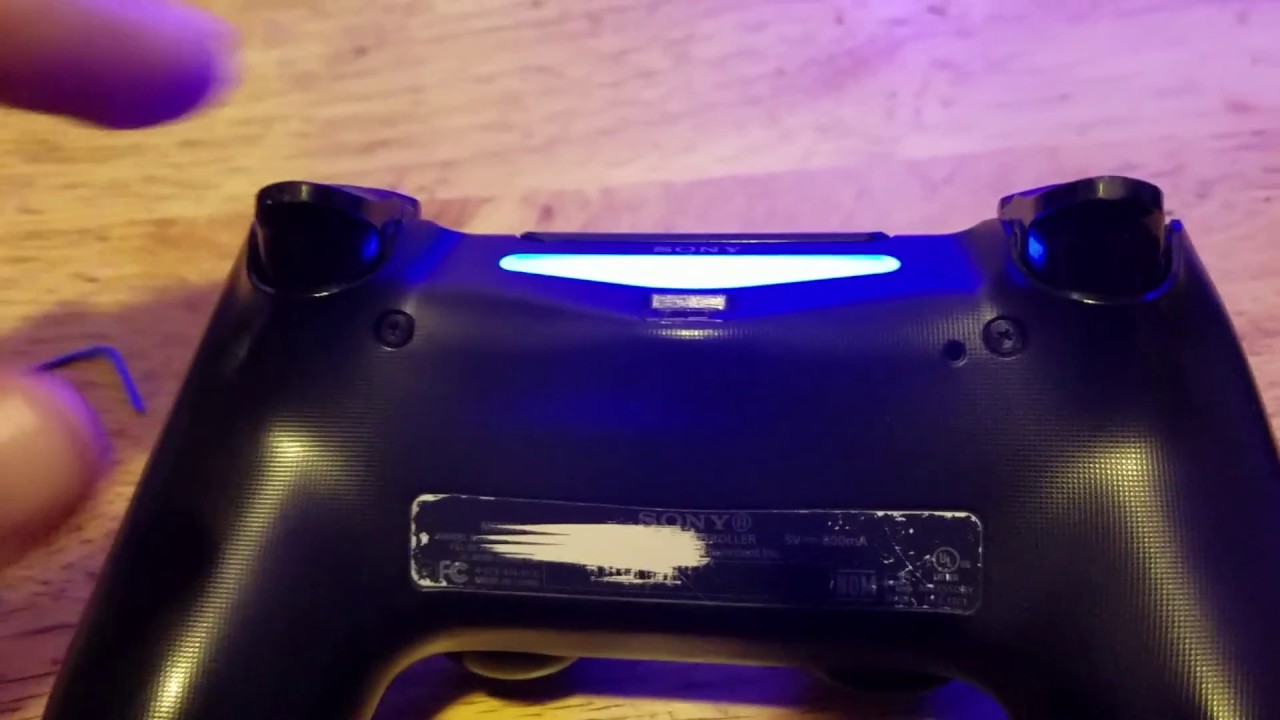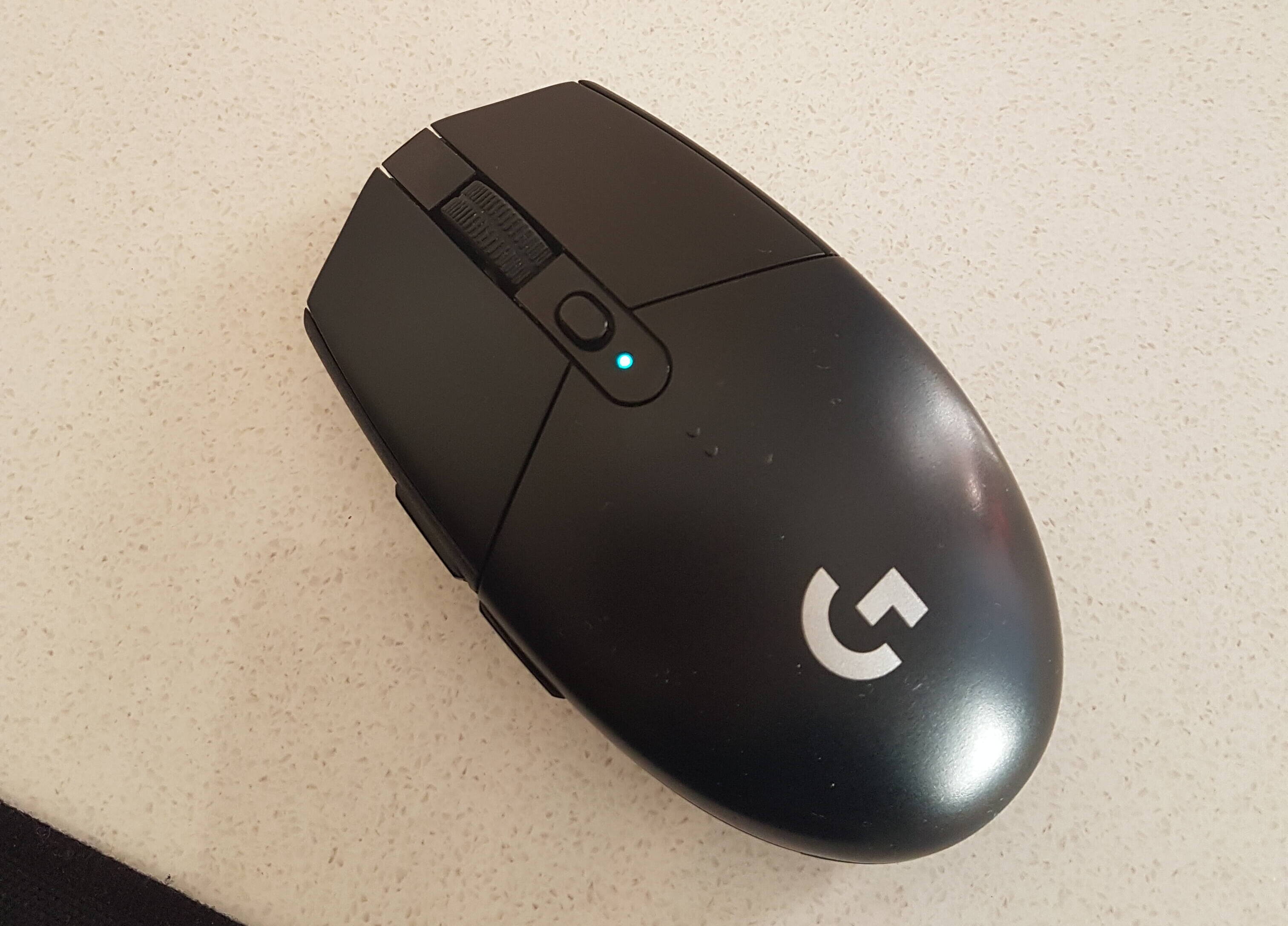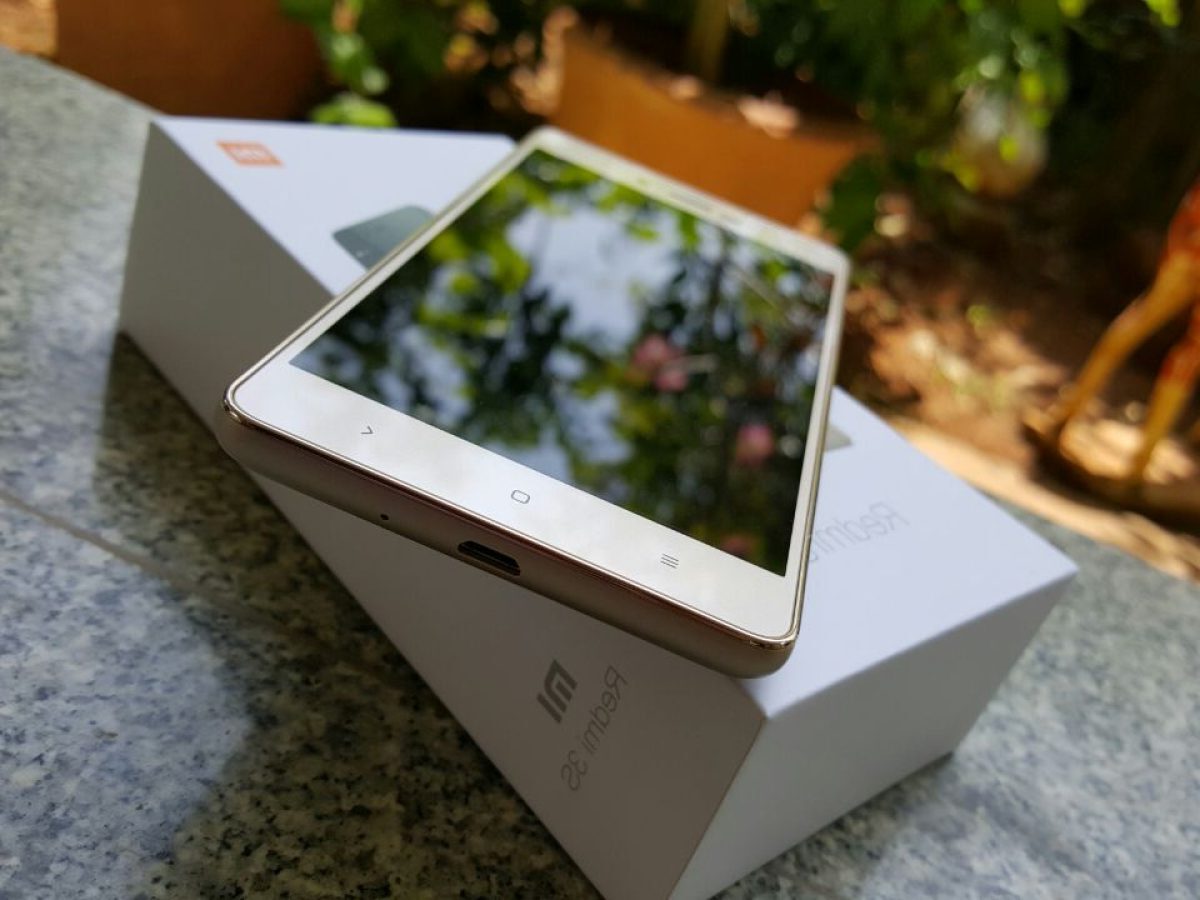Introduction
Welcome to the world of uninterruptible power supply (UPS) systems! These handy devices are designed to provide backup power in case of electrical outages or fluctuations. However, at times, you may encounter a situation where the UPS battery light starts blinking. This can be quite alarming and leave you wondering what exactly is happening.
To have a better understanding of why the UPS battery light is blinking, we must first comprehend how a UPS functions. Essentially, a UPS acts as an intermediary between your electronic devices and the main power supply. It consists of a battery that stores power and an inverter that converts the battery’s DC power into AC power to keep your equipment running when the main power source fails.
There could be several reasons why the UPS battery light is blinking. It could be a low battery warning, an overload condition, a battery fault, or even overheating.
In this article, we will explore these potential causes and provide solutions to address the issue. By the end, you will have a clearer understanding of why your UPS battery light is blinking and how to resolve it.
How Does a UPS Work?
Before delving into the reasons why the UPS battery light may be blinking, it is important to comprehend how a UPS operates.
A UPS, or uninterruptible power supply, is a device that provides temporary backup power to electrical appliances in the event of a power outage or voltage fluctuation. It acts as a safeguard, ensuring uninterrupted power supply to critical devices such as computers, servers, and telecommunications equipment.
At its core, a UPS consists of three main components:
- Battery: The battery is the heart of the UPS. It stores electrical energy that can be used when there is a power interruption. It is typically charged when the main power supply is available and discharges when power is lost or unstable.
- Inverter: The inverter converts the battery’s DC (direct current) power into AC (alternating current) power. This allows the connected devices to receive a stable power supply that mimics the utility power.
- Transfer Switch: The transfer switch serves as the mediator between the main power supply and the UPS. It automatically detects when there is a power interruption and switches the power source from the utility to the battery power, ensuring seamless power supply to the connected devices.
When the main power supply is available, the UPS continuously charges the battery while providing a steady power supply to the devices. In case of a power outage or voltage dip, the transfer switch instantly switches the power source from the utility to the battery power. This switch happens almost instantaneously, ensuring that the connected devices experience no interruption in power.
Some UPS systems also have additional features, such as surge protection, which safeguard the connected devices from power surges and voltage spikes. This further ensures the longevity and safety of your electronic equipment.
Understanding the inner workings of a UPS is crucial in identifying the potential causes of the blinking battery light. Next, we will explore some common reasons why the UPS battery light may be blinking and discuss steps to rectify the issue.
Reasons for UPS Battery Light Blinking
When your UPS battery light starts to blink, it indicates that there is an issue that needs to be addressed. Let’s take a look at some common reasons behind the blinking battery light:
- Low Battery Warning: One of the most common reasons for a blinking UPS battery light is a low battery. When the battery charge drops below a certain threshold, the UPS triggers the low battery warning, which is indicated by the blinking light. This signals that the battery may not have enough power left to sustain the connected devices for an extended period of time.
- Overload Condition: Another possible cause of the blinking battery light is an overload condition. If you have connected too many devices to the UPS, or if the total power draw exceeds the UPS’s capacity, it can trigger an overload condition. This leads to the UPS not being able to provide sufficient power to all the connected devices, resulting in the blinking light as a warning.
- Battery Fault: In some cases, the blinking battery light may indicate a fault with the UPS battery. This could be due to a defective battery, an aging battery that needs replacement, or improper charging. A battery fault can affect the UPS’s ability to provide backup power and can potentially lead to a complete failure of the UPS system.
- Overheating: UPS systems generate heat during operation, especially during extended power outages or when the connected devices draw high power. If the UPS becomes too hot, it may trigger the blinking battery light as a warning sign of overheating. Overheating not only affects the UPS’s efficiency but can also lead to damage or failure of the internal components.
It is important to note that these reasons for a blinking battery light are not exhaustive and may vary depending on the specific UPS model. However, these are the most common issues that users encounter when their UPS battery light starts blinking.
In the next section, we will discuss what steps you can take when you encounter a blinking battery light on your UPS system. Understanding the underlying cause will help you troubleshoot and resolve the issue effectively.
Low Battery Warning
One of the most common reasons for a blinking UPS battery light is a low battery warning. When the battery charge drops below a certain threshold, the UPS triggers this warning to indicate that the battery may not have enough power left to sustain the connected devices for an extended period of time.
If you encounter a blinking battery light due to a low battery warning, there are several steps you can take to address the issue:
- Check Battery Connection: Start by checking the connections between the UPS and the battery. Ensure that all the connections are secure and free from any corrosion or damage. Loose or faulty connections can result in poor charging or inadequate power supply from the battery.
- Charge the Battery: If the battery charge is low, it’s important to charge it fully. Connect the UPS to a reliable power source and allow the battery to charge for an extended period of time. Follow the manufacturer’s instructions for charging the battery to ensure optimal performance.
- Replace Old Batteries: If your UPS has been in use for a long time, it’s possible that the batteries have aged and are no longer holding a charge effectively. In such cases, it may be necessary to replace the batteries with new ones. Consult the UPS manufacturer or a professional technician for guidance on finding the appropriate replacement batteries for your specific UPS model.
- Reduce Power Usage: If you frequently experience low battery warnings, it may be helpful to reduce the power consumption of the connected devices. Consider disconnecting any non-essential equipment from the UPS, or limiting the use of power-hungry devices during periods of extended power outage. This will help prolong the battery life and ensure that the UPS can provide sufficient backup power when needed.
By taking these steps, you can effectively address the low battery warning and prevent the UPS battery light from blinking due to low battery charge. Regular maintenance and proper battery management are crucial to ensure the reliability and performance of your UPS system.
Next, we will explore another common cause of a blinking battery light: an overload condition.
Overload Condition
Another common reason for the UPS battery light to blink is an overload condition. This occurs when the total power draw from the connected devices exceeds the UPS’s capacity to provide power.
When the UPS detects an overload, it triggers the blinking battery light to indicate that it is unable to handle the excessive power demand. An overload condition can occur due to various reasons, such as connecting too many devices, using power-hungry equipment, or exceeding the maximum power rating of the UPS.
If you encounter a blinking battery light due to an overload condition, here are some steps you can take to resolve the issue:
- Disconnect Non-Essential Devices: Start by disconnecting any non-essential devices from the UPS. Identify devices that are not critical during a power outage and unplug them. This will reduce the overall power demand on the UPS and help alleviate the overload condition.
- Check Power Consumption: Assess the power consumption of the connected devices. Make sure that each device is using a reasonable amount of power and is not exceeding its operational limits. Consider replacing power-hungry devices with more energy-efficient alternatives to balance the power load on the UPS.
- Distribute Power Load: If the overload condition persists, distribute the power load evenly across multiple UPS units if available. Prioritize critical devices and spread out the power demand across multiple UPSs to ensure each unit operates within its capacity.
- Upgrade to a Higher Capacity UPS: If the overload condition is frequent and persistent, it may be necessary to upgrade to a UPS with a higher capacity. Assess the power requirements of your equipment and select a UPS that can comfortably handle the total power draw. Consult with a professional to determine the ideal UPS capacity for your needs.
By following these steps, you can effectively address the overload condition and prevent the UPS battery light from blinking. Remember to review the power requirements of the connected devices and ensure that they are within the limits of the UPS to maintain its optimal performance.
In the next section, we will discuss another potential reason for a blinking battery light: a battery fault.
Battery Fault
If your UPS battery light is blinking, it may indicate a battery fault. A battery fault occurs when there is an issue with the UPS battery, such as defects, aging, or improper charging. This can lead to a compromised battery performance and potential failure of the UPS system.
To address a battery fault and resolve the blinking battery light, consider the following steps:
- Inspect Battery Connections: Start by checking the connections between the UPS and the battery. Ensure that all connections are securely attached and free from any corrosion or damage. Loose or faulty connections can lead to insufficient charging or inadequate power supply from the battery.
- Perform Battery Self-Test: Most modern UPS systems allow you to perform a battery self-test. This test checks the health and performance of the battery. Refer to the UPS user manual to learn how to initiate a battery self-test. If the test indicates a battery fault, it may be necessary to replace the battery.
- Replace the Battery: If the battery is faulty, aging, or not holding a charge effectively, it is recommended to replace the battery. Consult the UPS manufacturer or a professional technician to obtain the correct replacement battery for your specific UPS model. Follow the manufacturer’s guidelines for battery replacement to ensure compatibility and proper installation.
- Consult a Professional Technician: If you are uncertain about the battery status or face recurring battery faults, it is advisable to consult a professional technician. They can assess the battery condition and suggest appropriate actions, such as battery recalibration or advanced diagnostics.
Addressing battery faults promptly is crucial to maintain the reliability and functionality of your UPS system. Regular battery maintenance, such as periodic checks and replacements, can help prevent future battery faults and ensure optimal UPS performance.
Next, we will explore another potential cause for the blinking battery light: overheating.
Overheating
Another possible reason for a blinking UPS battery light is overheating. UPS systems generate heat during operation, especially during extended power outages or when connected devices draw high power. If the UPS becomes too hot, it may trigger the blinking battery light as a warning sign of overheating.
To address the issue of overheating and resolve the blinking battery light, consider the following steps:
- Ensure Proper Ventilation: Check the surrounding environment of the UPS to ensure proper ventilation. Ensure that there is adequate airflow around the UPS unit, and it is not placed in a confined space or obstructed by other objects. Ventilation is essential to dissipate the heat generated by the UPS effectively.
- Clean Dust and Debris: Dust and debris can accumulate on the UPS and inhibit airflow, leading to overheating. Regularly clean the UPS unit and remove any dust or debris that may have accumulated on the vents, fans, or internal components. Use compressed air or a soft brush to gently clean the surfaces without causing any damage.
- Limit Power Consumption: Reduce the power consumption of connected devices to lessen the load on the UPS and mitigate overheating. Disconnect non-essential devices and consider spreading the power load across multiple UPS units if available. This will help reduce the heat generated and alleviate the chances of the UPS overheating.
- Consider External Cooling: If the UPS continues to overheat despite proper ventilation and load management, consider using external cooling solutions. These can include additional fans or coolers specifically designed for UPS units. Consult the manufacturer or a professional technician for recommendations on suitable cooling options for your UPS model.
By implementing these steps, you can effectively address the issue of overheating and prevent the UPS battery light from blinking. Regular maintenance, proper ventilation, and load management are essential to ensure the longevity and optimal performance of your UPS system.
Now that we have explored the various potential causes of a blinking battery light, we will discuss what to do when you encounter this issue in the next section.
What to Do When UPS Battery Light is Blinking
If you encounter a blinking UPS battery light, there are several steps you can take to address the issue. By following these steps, you can identify the underlying problem and resolve it effectively:
- Check Battery Connection: Start by checking the connections between the UPS and the battery. Ensure that all connections are secure and free from any corrosion or damage. Loose or faulty connections can hinder the charging process and result in the blinking battery light.
- Check Battery Status: Monitor the battery status to determine if it is low or showing signs of degradation. Many UPS systems have LCD displays or indicators that provide information about the battery status. If the battery is low, follow the recommended steps for recharging or replacing it.
- Investigate for Overload: Assess if there is an overload condition triggering the blinking battery light. Check the power consumption of the connected devices and ensure that the total power draw does not exceed the UPS’s capacity. Disconnect non-essential devices or redistribute the power load across multiple UPS units if necessary.
- Address Battery Fault: If there is a battery fault, such as defects or aging, consider replacing the battery. Consult the UPS manufacturer or a professional technician for guidance on finding the appropriate replacement battery for your specific UPS model.
- Prevent Overheating: Take measures to prevent overheating by ensuring proper ventilation around the UPS unit. Clean dust and debris regularly to maintain optimal airflow. Limit the power consumption of connected devices and consider using external cooling solutions if necessary.
It is important to address the issue promptly to ensure the UPS’s reliability and uninterrupted power supply to your critical devices. If you are unsure about the cause of the blinking battery light or if the issue persists, it is advisable to consult a professional technician or contact the UPS manufacturer for further assistance.
By following these troubleshooting steps and taking appropriate actions, you can resolve the blinking battery light issue and ensure that your UPS operates smoothly.
Next, we will wrap up this article with a summary of the key points discussed.
Check Battery Connection
When the UPS battery light starts blinking, it’s important to check the battery connection as it is often the simplest yet significant potential cause. A loose or faulty connection between the UPS and the battery can disrupt the charging process and hinder the battery’s ability to supply power effectively.
To check the battery connection and ensure it is secure and intact, follow these steps:
- Power Off the UPS: Before inspecting the battery connection, ensure that the UPS is turned off and unplugged from the main power source. This is crucial for safety purposes.
- Locate the Battery Compartment: Depending on the UPS model, the battery compartment may be located either at the back or bottom of the unit. Refer to the UPS’s user manual or documentation to find the exact location of the battery compartment.
- Inspect the Battery Connections: Carefully examine the connections between the UPS and the battery. Ensure that the terminals are clean, secure, and not corroded. Corrosion can interfere with the electrical connection and affect the charging process. If there is corrosion present, gently clean the terminals using a cloth or a soft brush.
- Tighten Loose Connections: If you find any loose connections, tighten them securely. Use the appropriate tools, such as a screwdriver, if necessary. Make sure the connections are snug but not excessively tight to avoid damaging the battery or the UPS connectors.
- Verify External Connections: Check the external connections of the UPS. Ensure that the power cord and any additional cables or cords are securely plugged into the appropriate ports. Loose or disconnected external connections can also cause the blinking battery light.
After checking and tightening the battery connection, plug the UPS back into the power source and turn it on. Observe if the battery light continues to blink. If the problem persists, move on to the next troubleshooting steps to identify and address the underlying cause.
Regularly inspecting and maintaining the battery connection is essential to ensure the proper functioning of the UPS system. Loose or corroded connections can significantly impact the performance and reliability of the UPS. By taking the time to check and secure the battery connection, you can potentially resolve the blinking battery light issue and ensure a smooth power supply to your devices.
Next, we will discuss how to check the battery status and what steps to take based on its condition.
Check Battery Status
Checking the battery status is essential when the UPS battery light is blinking. By assessing the battery’s condition and charge level, you can gather valuable information to determine the appropriate actions to take. Most modern UPS systems have built-in indicators or LCD displays that provide insights into the battery status.
To check the battery status on your UPS, follow these steps:
- Refer to the UPS Manual: Consult the user manual or documentation provided with your UPS to understand how to access and interpret the battery status information. It will provide specific instructions based on the model of your UPS.
- Look for Indicators or Displays: Examine the UPS for any indicator lights or an LCD display panel. These typically display information about the battery charge level and may also indicate if there are any issues or faults with the battery.
- Interpret the Battery Charge Level: Check the battery charge level indicated on the UPS display. If the battery charge is low, it may trigger the blinking battery light as a warning sign that the battery is nearing depletion. In such cases, it is necessary to recharge or replace the battery.
- Pay Attention to Error Messages: The UPS display may also show error messages related to the battery. Common error messages include “Battery Fault” or “Replace Battery.” These messages indicate potential issues with the battery that need to be addressed.
- Seek Professional Assistance: If you are unsure about the battery status or if the UPS shows error messages indicating a faulty battery, it is recommended to seek professional assistance. Contact the manufacturer’s support or a professional technician who specializes in UPS systems for guidance and further diagnostics.
Based on the battery status information obtained from the UPS, you can determine the next steps to take. If the battery charge level is low, proceed with recharging or replacing the battery as recommended by the manufacturer. If error messages indicate a faulty battery, follow the appropriate steps provided by the manufacturer or consult a professional for guidance.
Regularly checking the battery status ensures that your UPS is ready to provide reliable backup power when needed. It allows you to proactively address any battery-related issues and maintain the optimal performance of your UPS system.
Next, let’s move on to discussing how to deal with an overload condition in relation to the blinking battery light.
Check for Overload
When the UPS battery light is blinking, it is important to check for an overload condition. An overload occurs when the total power consumption of connected devices exceeds the capacity of the UPS to handle the load. This can result in the UPS being unable to provide sufficient power and trigger the blinking battery light as a warning sign.
To check for an overload condition and resolve the issue, follow these steps:
- Review Connected Devices: Take stock of all the devices connected to the UPS. Make a list of the power requirements of each device, including their voltage and current ratings. This information can usually be found on the device label or in the user manual.
- Calculate Total Power Consumption: Add up the power requirements of all the connected devices to calculate the total power consumption. Ensure that the total power draw does not exceed the maximum capacity of the UPS. The maximum capacity is typically indicated on the UPS documentation or label.
- Disconnect Non-Essential Devices: If the total power consumption exceeds the UPS capacity, start by disconnecting non-essential devices from the UPS. These may include devices that are not critical during a power outage or devices with lower power requirements.
- Consider Redistributing Load: If disconnection of non-essential devices does not alleviate the overload, redistribute the load across multiple UPS units if available. Prioritize critical devices and connect them to different UPS units to balance the power demand. This helps ensure that each UPS operates within its capacity.
- Upgrade to a Higher Capacity UPS: If the total power consumption consistently exceeds the capacity of the current UPS, it may be necessary to upgrade to a UPS with a higher capacity. Consult with a professional technician or the UPS manufacturer to determine the appropriate UPS model that can handle the power requirements of all connected devices.
By addressing an overload condition, you can prevent the blinking battery light and ensure that the UPS operates efficiently and reliably. It is important to maintain a balanced power load to avoid overburdening the UPS and potentially damaging both the UPS and the connected devices.
Next, we will explore how to resolve issues related to overheating, which can also cause the UPS battery light to blink.
Resolve Overheating Issues
When the UPS battery light is blinking, overheating can be a potential cause. UPS systems generate heat during operation, especially during extended power outages or when connected devices draw high power. If the UPS becomes too hot, it may trigger the blinking battery light as a warning sign of overheating.
To resolve overheating issues and prevent the UPS battery light from blinking, follow these steps:
- Ensure Proper Ventilation: Check if the UPS is placed in a well-ventilated area. Ensure that there is adequate space around the UPS, allowing for proper airflow. Avoid placing the UPS in confined spaces or blocking the air vents with objects.
- Clean Dust and Debris: Regularly clean the UPS unit to remove any accumulated dust or debris. Dust can obstruct the air vents and impede proper airflow, leading to overheating. Use a soft cloth or compressed air to gently clean the exterior surfaces of the UPS and its vents.
- Reduce Power Consumption: Limit the power consumption of connected devices to lessen the load on the UPS and mitigate overheating. Disconnect non-essential devices or redistribute the power load across multiple UPS units if possible. This helps prevent excessive heat generation.
- Use Cooling Solutions: If necessary, consider using external cooling solutions to regulate the UPS’s temperature. This can involve additional cooling fans or coolers specifically designed for UPS units. Consult the UPS manufacturer or seek advice from a professional technician to determine suitable cooling options for your specific UPS model.
- Monitor Operating Environment: Keep an eye on the ambient temperature of the room where the UPS is located. Ideally, the room temperature should be within the recommended range specified by the UPS manufacturer. Avoid placing the UPS in areas with excessive heat or direct sunlight.
By implementing these steps, you can effectively mitigate overheating issues that cause the UPS battery light to blink. Maintaining proper ventilation, regularly cleaning the UPS, managing power consumption, and considering cooling solutions will help ensure optimal UPS performance and extend its lifespan.
Remember, mitigating overheating is crucial for both the UPS and the connected devices, as excessive heat can lead to premature equipment failure or damage. Taking proactive measures to resolve overheating ensures a reliable and stable power supply for your critical devices.
Finally, let’s conclude this article by summarizing the key points discussed.
Conclusion
The blinking of the UPS battery light can indicate various issues that need attention. In this article, we have explored some common reasons for the blinking battery light, such as low battery warning, overload condition, battery fault, and overheating.
To address these issues, we have provided steps to troubleshoot and resolve the blinking battery light. Checking battery connections, ensuring proper ventilation, monitoring power consumption, and assessing battery status are important steps in diagnosing and resolving the problem. Depending on the specific issue identified, actions such as recharging or replacing the battery, redistributing power load, or upgrading the UPS may be necessary.
Regular maintenance and careful management of your UPS system are key to keeping it functioning optimally. Periodic checks, cleaning, and proper ventilation help prevent issues like overheating. Additionally, understanding the power requirements and ensuring they do not exceed the UPS’s capacity can prevent overload conditions.
Remember, when dealing with UPS-related issues, it is important to follow the manufacturer’s guidelines and consult a professional technician if needed. Their expertise can help address complex issues and ensure the proper functioning and longevity of your UPS system.
By being proactive and taking the necessary steps to address the blinking battery light, you can ensure the uninterrupted power supply to your critical devices and protect them from potential power-related problems.
We hope this article has provided you with valuable insights and guidance in troubleshooting and resolving the blinking battery light issue on your UPS system. By understanding the causes and implementing the appropriate solutions, you can maintain the reliability and performance of your UPS, providing you with peace of mind during power outages and fluctuations.

























